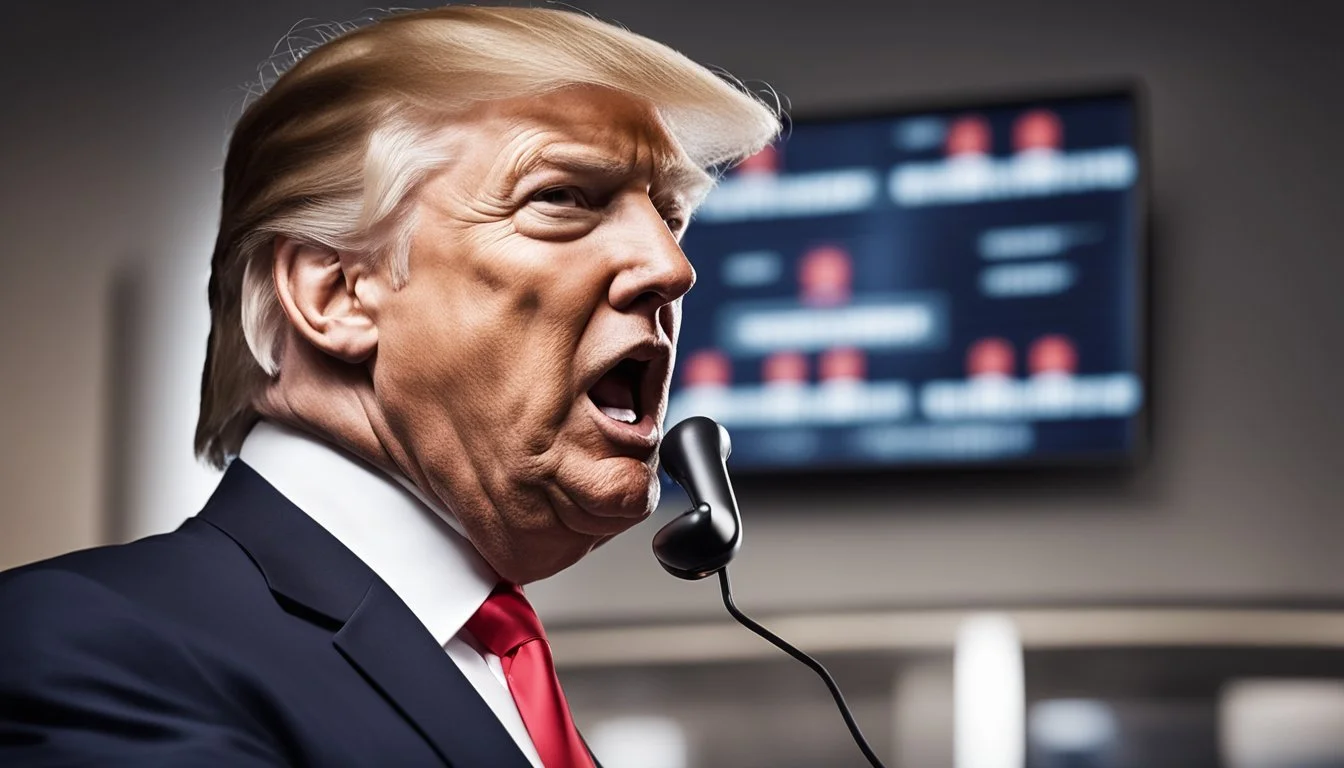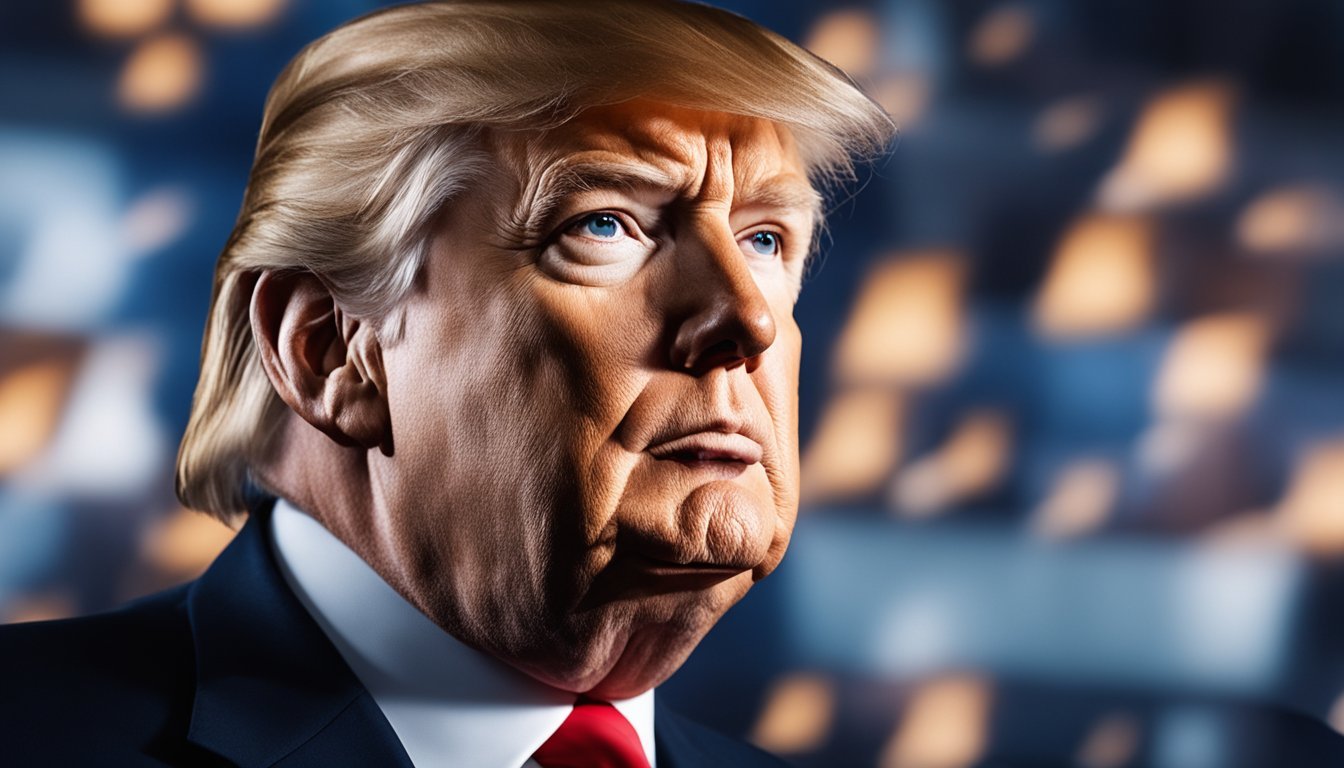Trump AI Generated 911 Image Ignites Political Firestorm
Donald Trump's use of AI-generated images has sparked controversy in the 2024 presidential campaign. The former US president recently shared manipulated photos on social media, including fabricated endorsements from Taylor Swift and images of her fans wearing "Swifties for Trump" shirts. These AI-created memes and images have raised concerns about the spread of misinformation and the potential impact on voters.
Trump's campaign has embraced AI technology to create attention-grabbing content, despite his own warnings about the dangers of artificial intelligence. This approach has drawn criticism from opponents who argue that it blurs the line between reality and fiction in political messaging. The use of AI-generated images featuring celebrities and manipulated scenes highlights the evolving tactics in modern political campaigns.
As the election approaches, the role of AI in shaping public perception and influencing voter sentiment remains a topic of intense debate. Trump's arrest in New York and his status as a former US president add further complexity to the discussion surrounding his campaign strategies and use of emerging technologies.
Donald Trump and the 9/11 Context
Donald Trump's connection to the events of September 11, 2001, has been a subject of discussion and scrutiny. As a prominent New York figure, Trump made public statements about the attacks in their immediate aftermath.
On the day of the attacks, Trump gave a phone interview to WWOR-TV. He commented on the destruction of the World Trade Center and speculated about the structural integrity of the buildings.
Trump's presence near Ground Zero in the days following 9/11 has been documented. Claims circulated that he paid workers out of pocket to assist with cleanup efforts, though these assertions lack definitive proof.
In subsequent years, Trump's statements about 9/11 have sometimes stirred controversy. He has made comments about Muslim Americans' reactions to the attacks and critiqued the government's response.
During his presidency, Trump's handling of 9/11-related issues drew attention. This included his interactions with first responders and families of victims, as well as policy decisions affecting 9/11 health programs.
Trump's relationship to 9/11 remains a complex topic. It encompasses his role as a New York businessman at the time, his public statements, and his later actions as a political figure.
Legal Troubles and Arrest
Donald Trump faced significant legal challenges leading to his arrest and prosecution. The case centered on allegations of falsifying business records in New York.
Arrest and Charges Overview
The Manhattan District Attorney's office, led by Alvin Bragg, brought charges against Donald Trump for falsifying business records. Law enforcement arrested the former president at his residence. Trump surrendered to authorities and was processed at a New York police station.
The charges stemmed from an investigation into hush money payments made during the 2016 presidential campaign. Prosecutors alleged Trump falsified business records to conceal these payments.
New York Legal Proceedings
Trump appeared in a Manhattan courtroom for his arraignment. He entered a not guilty plea to all charges. The judge set bail conditions and released Trump pending trial.
Prosecutors presented evidence of financial documents they claimed were falsified. Trump's legal team disputed the charges, arguing they were politically motivated.
The case proceeded through pre-trial motions and hearings. Both sides filed numerous legal briefs arguing key issues.
Public Response to Arrest
Trump's arrest sparked intense reactions across the political spectrum. His supporters rallied outside the courthouse, denouncing the prosecution as unfair. Critics praised the charges as accountability for alleged wrongdoing.
Social media platforms saw a surge in discussions about the case. Misinformation spread rapidly, including fake AI-generated images purporting to show Trump's arrest.
Trump used his Truth Social platform to communicate directly with supporters. He maintained his innocence and characterized the charges as a "witch hunt."
Impact on Media and Communication
AI-generated images of Donald Trump have significantly altered the media landscape and public discourse. These fabricated visuals have spread rapidly across digital platforms, influencing perceptions and challenging traditional information verification processes.
Social Media Presence
Trump's social media presence has been amplified by AI-generated images, particularly on platforms like Twitter and Truth Social. These artificial visuals often depict dramatic scenarios, such as his purported arrest, which quickly go viral. The speed at which these fake images spread outpaces fact-checking efforts, leading to widespread misinformation.
AI-generated content has also bolstered Trump's online following, with supporters sharing and engaging with these fabricated visuals. This phenomenon has reshaped how political figures maintain their digital presence, blurring the lines between reality and fiction.
Contribution to Misinformation
Deepfakes and AI-generated images of Trump have become a powerful tool for spreading misinformation. These fake visuals often appear convincing, making it challenging for viewers to distinguish between authentic and fabricated content.
The proliferation of AI-generated Trump images has eroded trust in visual media. News organizations and fact-checkers struggle to keep pace with the flood of artificial content, leading to a growing skepticism towards all visual information.
This trend has forced media outlets to adopt new verification techniques and educate the public on identifying AI-generated images. The rise of Trump-related deepfakes has sparked debates on digital literacy and the need for stronger safeguards against misinformation.
Artificial Intelligence in Image Generation
AI technology has revolutionized image creation, enabling the rapid production of highly realistic visuals. This capability raises important questions about authenticity and the potential for misuse in political contexts.
AI-Generated Images and Authenticity
AI tools can now produce convincing fake images in seconds. A recent example involved an AI-generated image of Donald Trump with black supporters, which circulated online. Such images pose challenges for verifying visual information, especially during election seasons.
Reverse image search tools help identify AI-created content, but may struggle as the technology improves. Social media platforms like Truth Social have become breeding grounds for spreading AI-generated political imagery.
The ease of creating fake visuals highlights the need for increased digital literacy. Voters must learn to critically evaluate images they encounter online, particularly those related to political figures or events.
Role of Midjourney in AI Imagery
Midjourney is a prominent AI image generation tool that has been at the center of political image controversies. The platform gained attention for its role in creating hyper-realistic fake images of public figures.
In response to concerns, Midjourney implemented restrictions on generating images of political candidates like Biden and Trump. This move aimed to curb the spread of potentially misleading visuals during election periods.
Despite these efforts, users have found ways to circumvent limitations. The ongoing challenge for AI companies is balancing creative freedom with responsible use of their technology.
Midjourney's actions highlight the broader ethical considerations facing AI image generation platforms as they navigate their impact on public discourse and information integrity.
Donald Trump's Influence on Technology and Media
Donald Trump's presidency marked a significant shift in the use of technology and media in politics. His embrace of Twitter as a primary communication tool reshaped how political figures interact with the public.
Trump's social media presence drove news cycles and influenced public discourse. His posts often generated widespread attention and debate, forcing traditional media outlets to adapt their coverage strategies.
The former president's claims of election fraud in 2020 highlighted the challenge of misinformation on social platforms. This led to increased scrutiny of content moderation policies and debates about free speech online.
Trump's ban from major social networks following the January 6th Capitol riot sparked discussions about platform power and accountability. In response, he launched Truth Social, his own social media platform.
The rise of AI-generated content has intersected with Trump's ongoing influence. Realistic fake images of Trump, including those depicting his alleged arrest, have circulated widely online.
These AI-created visuals demonstrate the potential for technology to blur the lines between fact and fiction in political discourse. They underscore the need for improved digital literacy and fact-checking tools.
Trump's presidency accelerated existing trends in media consumption and technology use. His impact continues to shape debates around social media regulation, artificial intelligence, and the spread of misinformation.
Stormy Daniels and the Legal Narrative
The Stormy Daniels case has become a significant chapter in Donald Trump's legal saga. Daniels, an adult film actress, alleges she had an affair with Trump in 2006.
The crux of the legal issue revolves around a $130,000 hush money payment made to Daniels in 2016. This payment, facilitated by Trump's former lawyer Michael Cohen, aimed to keep Daniels silent about the alleged affair.
In 2023, Trump faced criminal charges in New York City related to the hush money payment. Prosecutors argued that the payment constituted an illegal campaign contribution.
Trump's legal team has vigorously contested these charges. They've described the case as a "zombie case" that should have been dismissed long ago.
Daniels testified during the trial, providing detailed accounts of her alleged encounter with Trump. Her testimony spanned two days and included explicit details about their interaction.
The former president has consistently denied any wrongdoing. He maintains that the payment was a personal matter, not a campaign expense.
This case marks a historic moment in U.S. legal history. It represents the first time a former president has faced criminal charges in court.
The outcome of this trial could have far-reaching implications for Trump's political future and the broader legal landscape surrounding campaign finance.





